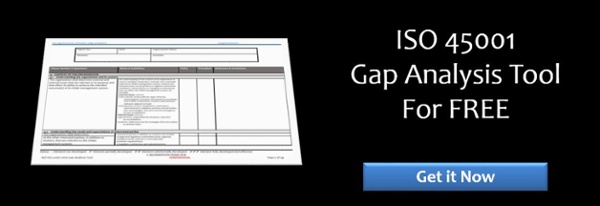
And simplifies compliance with local OH&S Regulation
Workplace safety is a critical issue that affects everyone, from employees to managers, customers, and visitors. In recent years, many organizations have taken significant steps to improve workplace safety and health by implementing internationally recognized occupational health and safety (OH&S) management systems. One such system is ISO 45001, the international standard for OH&S management.
ISO 13485 and Workplace Safety
ISO 45001 is designed to help organizations of all sizes and types manage their OH&S risks and improve their performance in this area. The standard is based on a risk management approach and emphasizes the importance of continual improvement.
Implementing the standard is relatively easy, especially if appropriate ISO 45001 training has been completed, and the standard is a natural companion to ISO 14001, the environmental management system standard.
Benefits of Compliance with ISO 45001 Requirements
It Reduces the likelihood of accidents, injuries, and illnesses
ISO 45001 protects everybody in the workplace by providing a framework for identifying and managing OH&S risks. The standard helps organizations to establish policies, procedures, and controls that promote a safe and healthy work environment. This, in turn, benefits all stakeholders by reducing the likelihood of accidents, injuries, and illnesses.
Provides a framework for legal and regulatory compliance
ISO 45001 also helps organizations comply with legal and regulatory requirements related to OH&S. By implementing the standard; organizations can demonstrate their commitment to workplace safety and willingness to comply with applicable laws and regulations.
Worker participation and consultation are mandatory
Another benefit of ISO 45001 is that it promotes worker participation and consultation. The standard requires organizations to involve workers in developing and implementing OH&S policies and procedures. This ensures that workers have a say in the safety and health of their workplace and can provide valuable input and feedback to improve safety performance.
All workers, not just those directly employed by the organization, are protected.
ISO 45001 also helps organizations to identify and manage their supply chain risks related to OH&S. The standard requires organizations to communicate their OH&S requirements to their suppliers and to ensure that their suppliers are also managing OH&S risks effectively. This helps to ensure that all workers, not just those directly employed by the organization, are protected from OH&S hazards.
ISO 45001 certification affirms your commitment to OH&S
In summary, ISO 45001 is a powerful tool for protecting everybody in the workplace. By implementing the standard, organizations can establish a robust OH&S management system that promotes a safe and healthy work environment, complies with legal and regulatory requirements, and involves workers in the process. Ultimately, ISO 45001 can help organizations to achieve their OH&S objectives and improve the well-being of all stakeholders.

Click on the image thumbnail to see the table of courses in full size, or click on the buttons on the other side to go to our ISO 45001 course overview or FAQ pages.
Related Articles
- 10 reasons why ISO 45001 matters to SMEs
- ISO 45001 Certification: 21 FAQs answered
- Free ISO 45001 Implementation Handbook (200+ pages)
- ISO 14971 Risk Management: 12 FAQs answered
- The Swiss Cheese Model of Risk Management Explained
deGRANDSON Global is an ISO Certified Educational Organization
In In October 2021, we secured certification to three education-related ISO Standards. We now have a university-grade management system in place conforming to the requirements of …
We have chosen ISO 21001 certification because it is based on independent third-party assessment, unlike IRCA and Exemplar badges (which we believe are commercially compromised). It is a ‘university grade’ standard in use globally by schools, colleges, and universities to demonstrate their competence.

